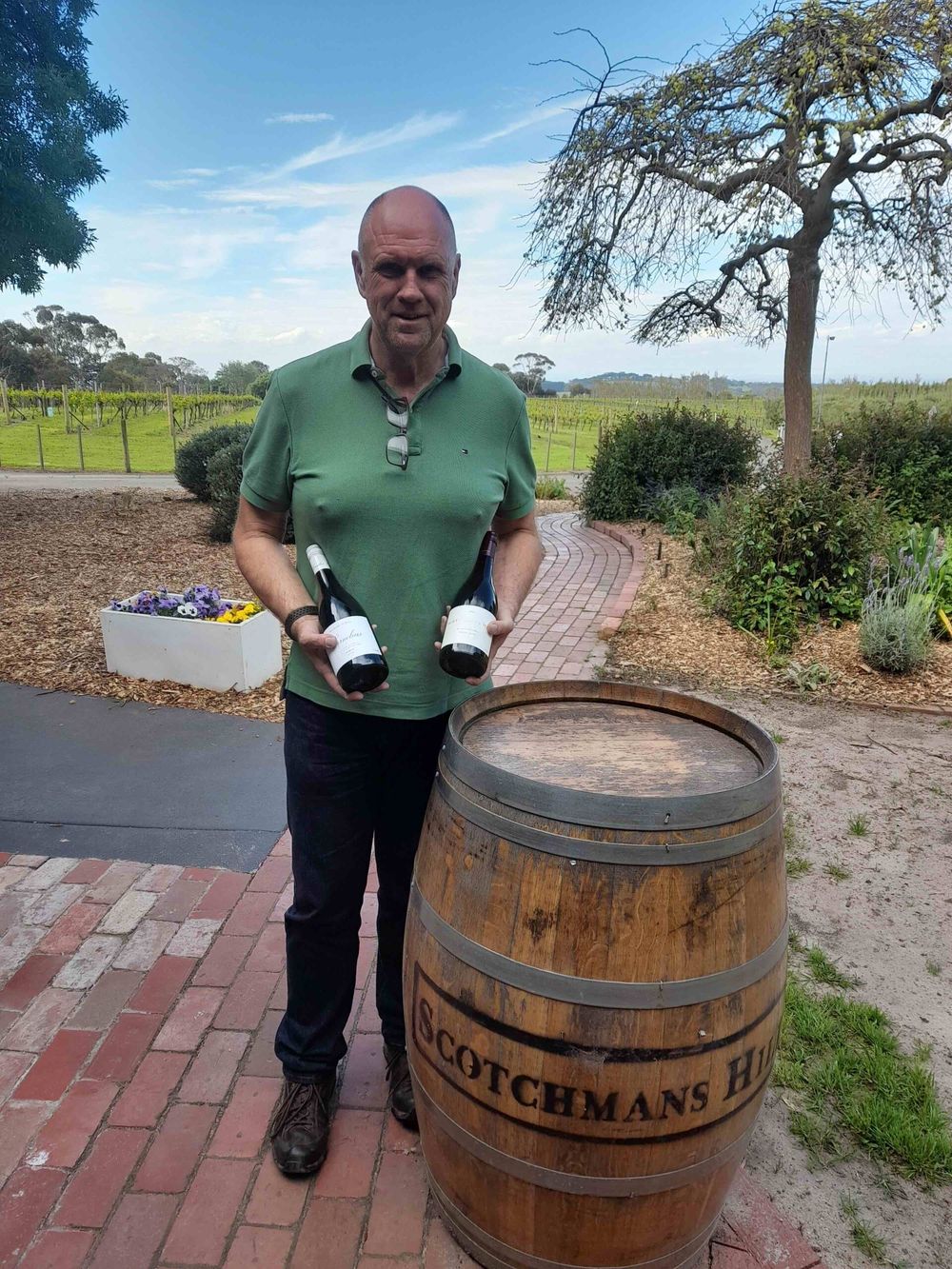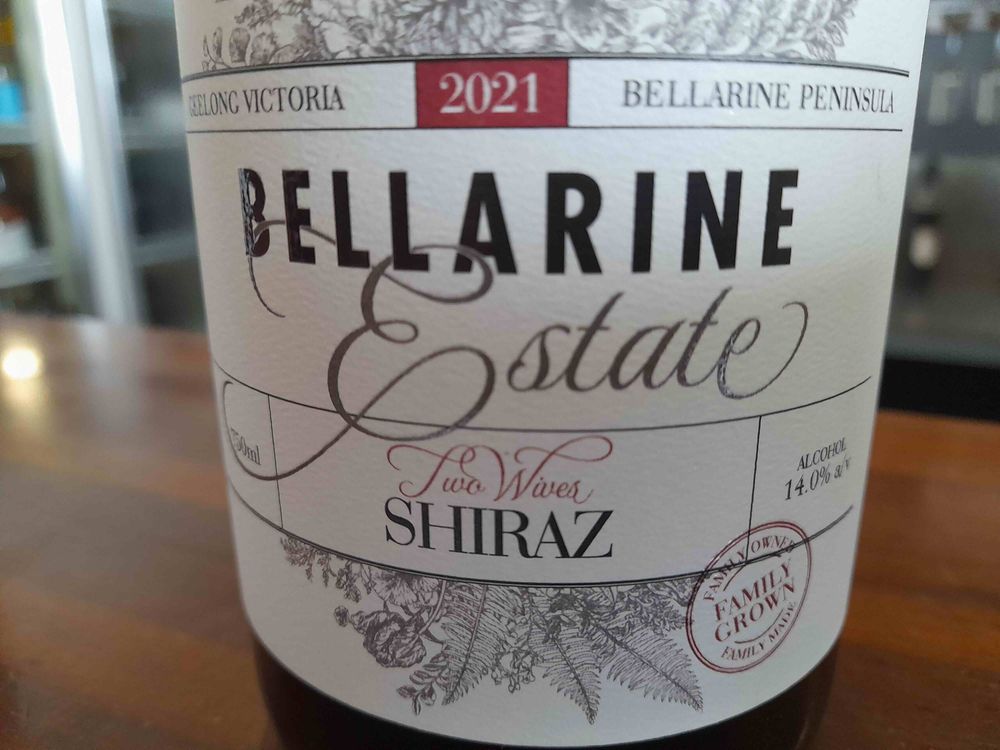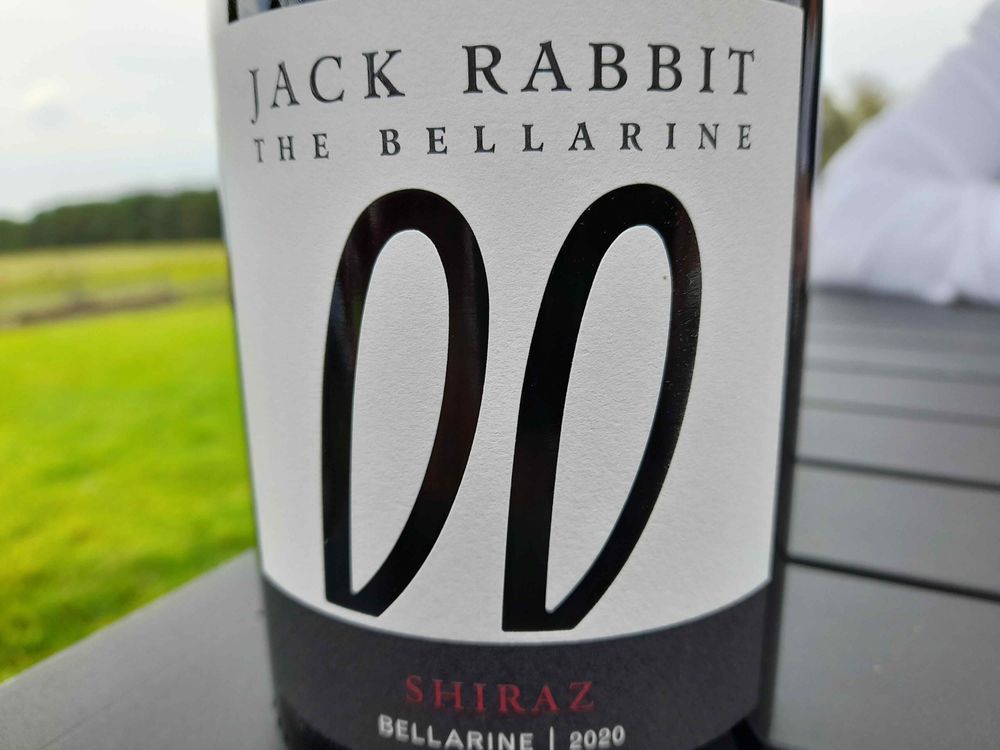“We are looking at refined cool-climate, with more spice and slightly under-ripe flavours – earthy, textural, high acid wines that need ageing.”

Geelong’s Shiraz reputation is growing: Dr Ray Nadeson
While the Geelong wine region has long been renowned for producing some of Victoria’s best Pinot Noir and Chardonnay, it is now forging a reputation for outstanding cool climate Shiraz. The increased global demand for medium-bodied examples of the variety with freshness and brightness of fruit shows no sign of abating, and Geelong can help satisfy it. This was very apparent to your correspondent on an autumn trip to the region.
So what makes Geelong such a suitable location for Shiraz?
Ray Nadeson, joint owner/winemaker of Lethbridge Wines with partner Maree Collis, pinpoints two factors. “The soils of Geelong are varied and interesting in that there are areas that are granite – not dissimilar to what you find in the Rhône – and areas which are basalt on limestone as at Lethbridge. The latter is like nowhere in the world except perhaps Etna, where they don’t have Syrah but do make very fine medium-bodied wines from grapes like Nero Mascalese.”
“We also have red-clay soils which are much more like parts of Burgundy,” Nadeson continues, “Much of Australia has old soils because we have a very old continental shield. So most of the soils are old and kind of leached. However the strip around the east coast has a lot of volcanic activity, and Geelong’s has only been in the last 30-50,000 years. So it makes them very young soils, much more like you imagine in Europe.”

Showcasing a sense of place: Scott Ireland of Provenance Wines
The second reason why Geelong is so suitable for top-end Shiraz is its very marginality, with ripeness not being found until autumn. “I think the best wines from a grape variety have to be in marginal sites,” Nadeson says.
“For example, if you are in the Rhône valley, you grow Syrah in the northern part of it which is more marginal. You could quite easily grow Syrah in the southern part, but you don’t tend to. The southern part is less marginal. Why do they grow Grenache there and not Syrah? Because Syrah shows its finer qualities in a marginal site. And Geelong IS marginal. If you look at the region as a whole, the Bellarine Peninsula is less marginal, whereas where we are at Lethbridge, is the most marginal as it’s up high and is cold, away from the moderating factor of the sea. We’re never going to be picking Shiraz fruit in February. We pick Shiraz often in May – well into autumn. But that is a cool site. In the Bellarine, they’ll be picking in April, which is still autumn.
Geelong’s reputation for Shiraz?
So much for Geelong’s feasibility for producing premium Shiraz. The question is can it become a renowned region for the varietal? and, once again, Nadeson is in no doubt. “Absolutely and, notwithstanding climate change, we are going to find we stay marginal even if slightly less so. In Australia where Shiraz is grown everywhere, we are not of the size, nor of the style that the average punter is going to want to drink. We are looking at refined cool-climate, with more spice and slightly under-ripe flavours – earthy, textural, high acid wines that need ageing. Does that sound like a supermarket plan? No way.”
“If you look at the big regions, they’ve got the big companies behind them, promoting the style and the wines, not only in the supermarkets but generally everywhere. And once they get on board, that region becomes famous, and other producers get pulled along behind them on their coat-tails. The thing about Geelong is that it is a relatively small region, not in area but in production, with fundamentally smaller producers. So I think there is a really good chance that we could get that niche which is high quality, cool climate Shiraz. ”

2016 is an excellent vintage: Robin Brockett, winemaker for Scotchmans Hill
Despite Geelong’s growing reputation for its Shiraz, the grape’s area under vine is not likely to increase.
“I don’t think people are planting more Shiraz, mainly because the political situation in China has meant there is an oversupply of it in Australia at present,” Nadeson declared. The figure is not exactly well-publicised, but Phil Reedman, the Adelaide-based British MW, estimates that Australia has a whopping 2.5 billion litres of wine sitting in tanks waiting to be bought after the Chinese market collapse – a substantial amount of which is Shiraz.
“So there is not much incentive to produce Shiraz when there is a quantity of it that can be sold for $16 a bottle, which is below cost price,” Nadeson adds. “The average punter doesn’t care and we can’t compete. So I think the Shiraz plantings will not be increasing any time soon.” With demand going up, and supply not increasing, Geelong’s Shiraz and Syrah could become ever more sought after.
6 of the best Geelong wine region’s Shiraz

Bellarine Estate Two Wives Shiraz, 2021
Very expressive red fruit from vines planted in 1996 on basalt and black clay with some limestone and high iron content. Supple tannins and really vibrant acidity while 20% new French oak gives structure. Selected by Qantas for first-class and business. An all-family affair with Peter Kenny having just handed over the winemaking reins to son Phil. 13.8% abv
Clyde Park Single Block G Shiraz, 2019
From a small block running east-west on black clay planted in 1999 to clone PT23. Wild yeast fermentation and single daily hand plunging before 10 months maturation in 40% new French oak. Blackcurrant and raspberry notes with peppery spice and mocha, all wrapped up in firm but fine-grained tannins. A ripper of a cool climate Shiraz. 13.5% abv
‘Indra’ Shiraz, Lethbridge, 2017
A one-hectare block of 25-year old vines, named after Nadeson and Collis’ daughter, yields just 15hl/ha for this gem. It sees 100% new French barriques for 18 months but the quality of the fruit sucks all that oak up effortlessly. Medium-bodied cool climate Shiraz at its best with white pepper, supple tannins and elegant complexity. 13.5% abv

Jack Rabbit Shiraz, 2020
Distinct cool climate varietal characteristics of rich berries and savoury white pepper. Medium-bodied with notable freshness, soft tannins and notes of violets, liquorice and blueberries. Such an appealing Shiraz at a very competitive price. 14% abv
Provenance Wines Shiraz, 2021
A cracker from Provenance’s biodynamically-farmed Spence vineyard. Owner-winemaker Scott Ireland admits he is obsessed with showcasing sense of place, so employs no new oak. Spicy and fresh with black-purple fruit flavours, this medium-bodied Shiraz is a delight. 30% of it is sold at the atmospheric cellar door and its outstanding restaurant, sited on an 1870s paper mill by the Barwon River. 14% abv
Scotchmans Hill ‘Cornelius’ Strathallan Vineyard Syrah, 2016
Complex blueberry and black cherry fruit with spice and white pepper from this premium cool maritime climate producer; impressive structure from 50% new oak and 50% second fill for 18 months. Palpable concentration (low yield of 37 hl/ha) and a long finish. Fermented at 28C with wild yeasts. A superb Rhone-like Syrah from what chief winemaker Robin Brockett describes as an “excellent’ vintage. 14% abv































